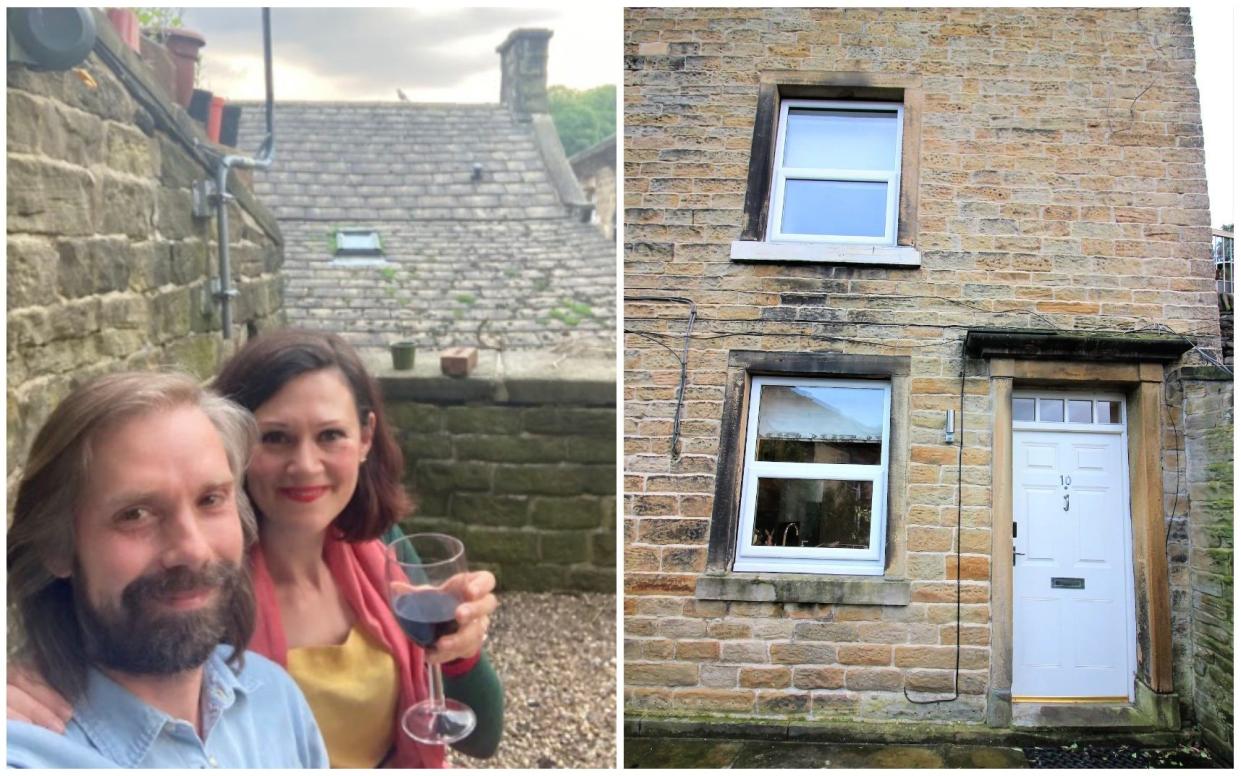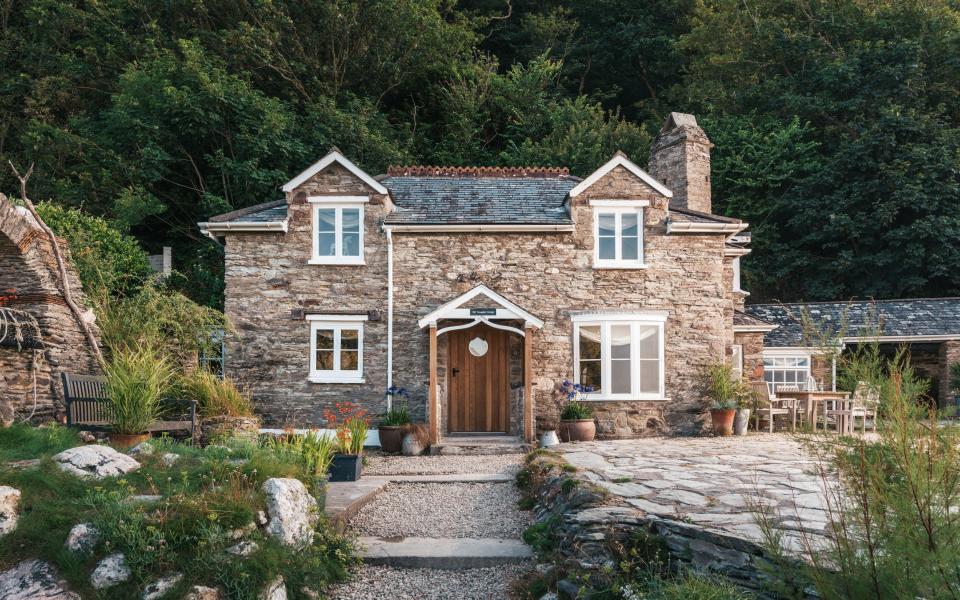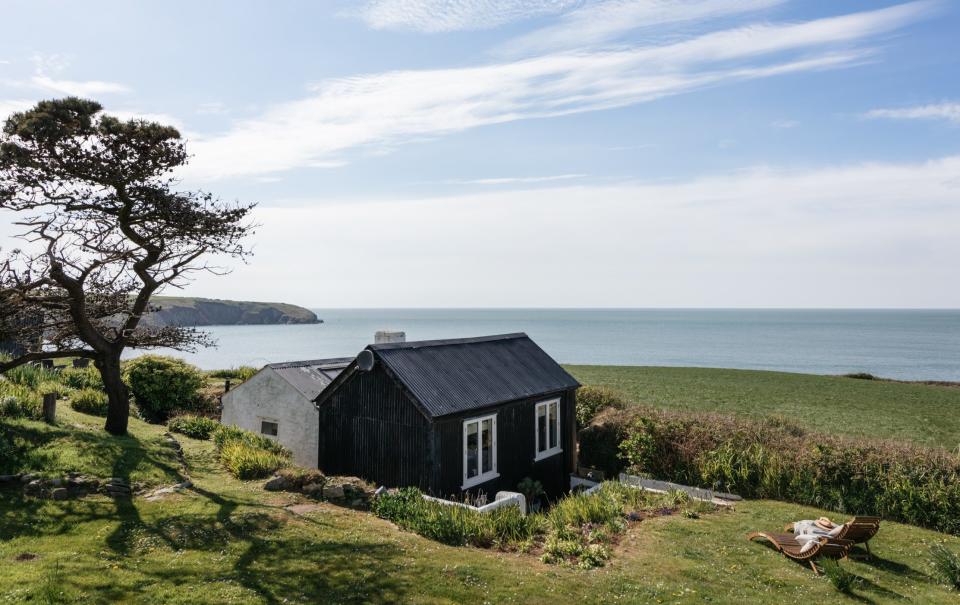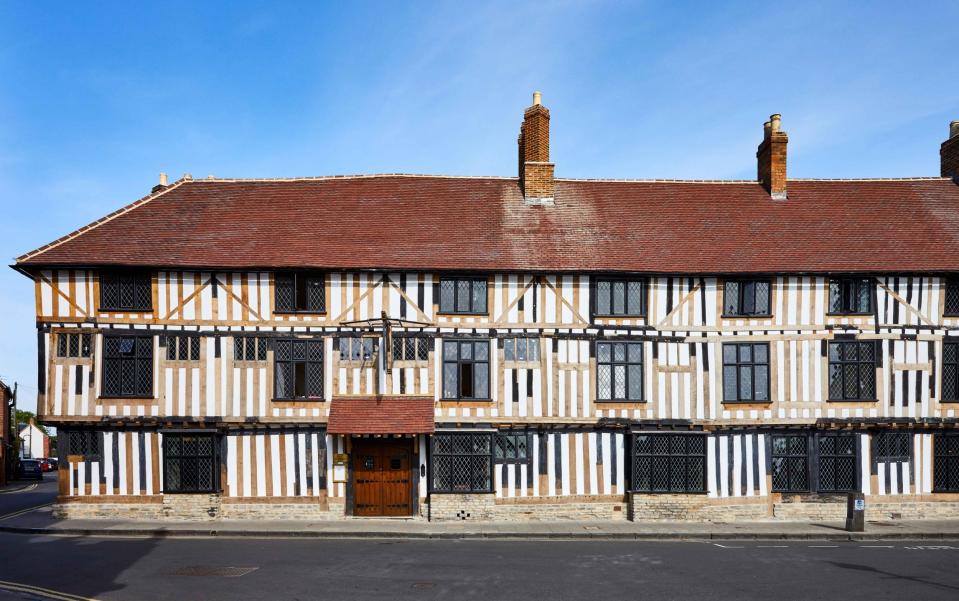I discovered my holiday cottage was the site of a murder

Sarah Ramsden was discovered by her youngest daughter, aged six, one spring lunchtime.
The 43-year-old was face down on the bedroom floor, her arms and body badly blistered. Nearby, an upended glass bottle spoke of her unhappy fate: Sarah had died through ammonia burns and asphyxiation. Her husband Jonas Ramsden, 50, was found hanged from the ceiling of their stone-built Yorkshire cottage.
The year was 1900 and the story was splashed luridly in newspaper reports nationwide: a “Supposed murder and suicide at Holmfirth,” “a shocking domestic tragedy.” The crime committed, one newspaper ventured, by Jonas: “a jealous weaver.”
The Henley and Oxfordshire Standard reported on an inquest into the case: “Their daughter said her father had threatened to make away with himself, his wife, and witness. On account of his jealousy Mrs Ramsden with her six children left her husband, but returned three weeks ago,” the paper reported, adding that she had consulted a solicitor with the view of obtaining a separation order. Not long after, she was dead.
None of the foregoing is, I’ll admit, the sort of thing holidaymakers typically want to dwell upon over our full Englishes at a character cottage getaway. But such was the strange outcome for me, when a cottage holiday in rural Yorkshire collided with my (thoroughly midlife) hobby of house history research.
I began delving into the census records and newspaper cuttings for the secret history of old houses during the pandemic lockdowns when, with shops closed and time on my hands, I struck upon the idea of researching friends’ home histories as birthday gifts. Catching the bug, I began to research the histories of buildings I passed through, including hotels and holiday homes.
These days the Ramsdens’ two storey cottage is ‘Cozy Cottage’, a well-appointed holiday home a short climb up stone steps from Holmfirth landmark Sid’s Café’ (of Last of the Summer Wine fame, known for its tasty Yorkshire tea cake sandwiches). I spent a pleasant two weeks with my partner and young son at the cottage in the summer of 2021 visiting my mum, who lives nearby.
In its 2020s incarnation, the cottage – a classic two-storey “underdwelling” set into the hillside with a second two-storey dwelling above it – features muted soft furnishings, a full Sky TV setup and a pleasant sun-warmed stone terrace.

Its single double has views of white pigeons roosting on the town’s rooftops and the lush green Holme Valley beyond. Even armed with knowledge of its Victorian history, the cottage’s cheerful prospect little hinted of its dark past. To me, at least.
My more superstitious other half, Tim, however, was less assured. Glancing suspiciously at the loft hatch on the narrow stone stairs as he asked, the morning after my murderous revelation.
“Do you think all those bad vibes are why I’m struggling to connect to the internet?” adding: “It all freaks me out a bit, if I’m honest, I’d rather not have known.”
In an ongoing YouGov study of UK pastimes, genealogy currently ranks in the top 25 “cerebral” hobbies, with over 50s being particularly fond of exploring their family trees (for Baby Boomers the hobby is 14th in popularity on a list headed up by reading, baking and watching TV).
Home histories have also increased in popularity in recent years, boosted by BBC Two house history show A House Through Time, the fifth series of which is currently in production, and by the expansion of genealogy websites such as Ancestry.co.uk and FindMyPast.co.uk, which have simplified the business of searching for addresses in newspaper archives and on census records (doing away with the need to pore over microfiches in our local libraries, as we did as recently as the 2010s).
Melanie Backe-Hansen is a house historian and the co-author, with the show’s host historian David Olusoga, of A House Through Time (2020, Picador) the book which accompanies the hit TV series. Backe-Hansen says many of us harbour a fascination with the previous residents of buildings we inhabit, even as transient holidaymakers.
“One of the first things I am asked as a house historian is: ‘Have you discovered any ghosts or murders?’” she laughs. “For most of us, there is something ghoulish, yet strangely fascinating, about uncovering dark tales from the past that hide within the walls of our houses.”
Hotels, of course, have long offered potted histories of their properties – many of them sanitised affairs highlighting links to royalty – in their in-room guest information folders. Holiday cottage companies are also cottoning on to the appeal of property histories to a certain demographic of history-loving tourists.

They include Unique Homestays, which names its self-catering stays after events that have happened in the buildings they occupy. Among these are The Brandy Thief, a coastal cottage in Devon that once housed the stash of 18th-century bootlegger Hannibal Richards (of the feared bootlegging gang Cruel Coppinger), and The Cable Hut in Pembrokeshire, which was the First World War base of a small unit of soldiers who sent covert messages to America via a telegraphy cable station nearby.
Unique Homestays’ Hannah Jones says that quirky property histories appeal to: “the American market in particular as well as people looking for a bit of atmosphere: something that’s more of a conversation point than your standard holiday home”.

The 16th-century Tower in Keith Marischal, a baronial mansion in East Lothian, is today listed as a holiday stay on upscale booking site Crabtree & Crabtree and features a spiral staircase and grand four posters in its four brightly decorated doubles. During the brutal North Berwick witch hunts of the 17th century, however, hundreds of condemned women were housed here the night before their executions, after “confessing” to being witches.
Whilst the holiday cottage company doesn’t “actively market” the property’s grim involvement in these pogroms on its website, they told Telegraph Travel that owners Sophy and Alex Campbell have a collection of cuttings about the tower’s past and “are more than happy to discuss these with curious guests”.
More recent discoveries in my holiday genealogy career are, thank goodness, less macabre. There was the Cornish cottage that was once home to a priapic James Edward Rowe, who was fined 12s and 6d in 1939 for sending a “filthy letter” to one Mrs Tregear, “a married woman of irreproachable character.” (The letter invited Mrs Tregear to “entertain” Rowe and another unnamed lady at the cliffs in Pendeen.)
The 16th-century Falcon Hotel in Stratford-upon-Avon, now the handsome historical boutique Hotel Indigo Stratford-upon-Avon, was – I discovered, following a pleasant stay here in 2022 – the scene of a fraud perpetrated by Marshall Cormack and Babette Elkington, who stung the hotel for £1 and 1s in board and lodgings by posing as one Lord Cardarry and his sister, aristocrats of good account from London.

“There had been many accounts of them,” said one Superintendent Parker of their arrest in Oxford in 1932. “They had been going about the country saying the same story”. In the dock, Cormack said the scamming road trip had begun “as a big adventure” and argued in his defence that he was going to “write [the affair] up for the Press”.
I like to think that the poor six year old who tragically found her parents dead in the modest stone cottage in the Holme Valley later had a happier life. The 1939 census, taken at the outbreak of war, finds her living with her lorry driver husband and two sons, a wool finisher and solicitor’s clerk, at another address in the village. Both sons went on to be decorated servicemen in WW2. Back at the cottage, I raised a strong Yorkshire tea to her, as Tim wondered at my tolerance for the gruesome aspects of our shared national past.
“Here’s to the ghosts we travel with,” I said, as he shook his head.